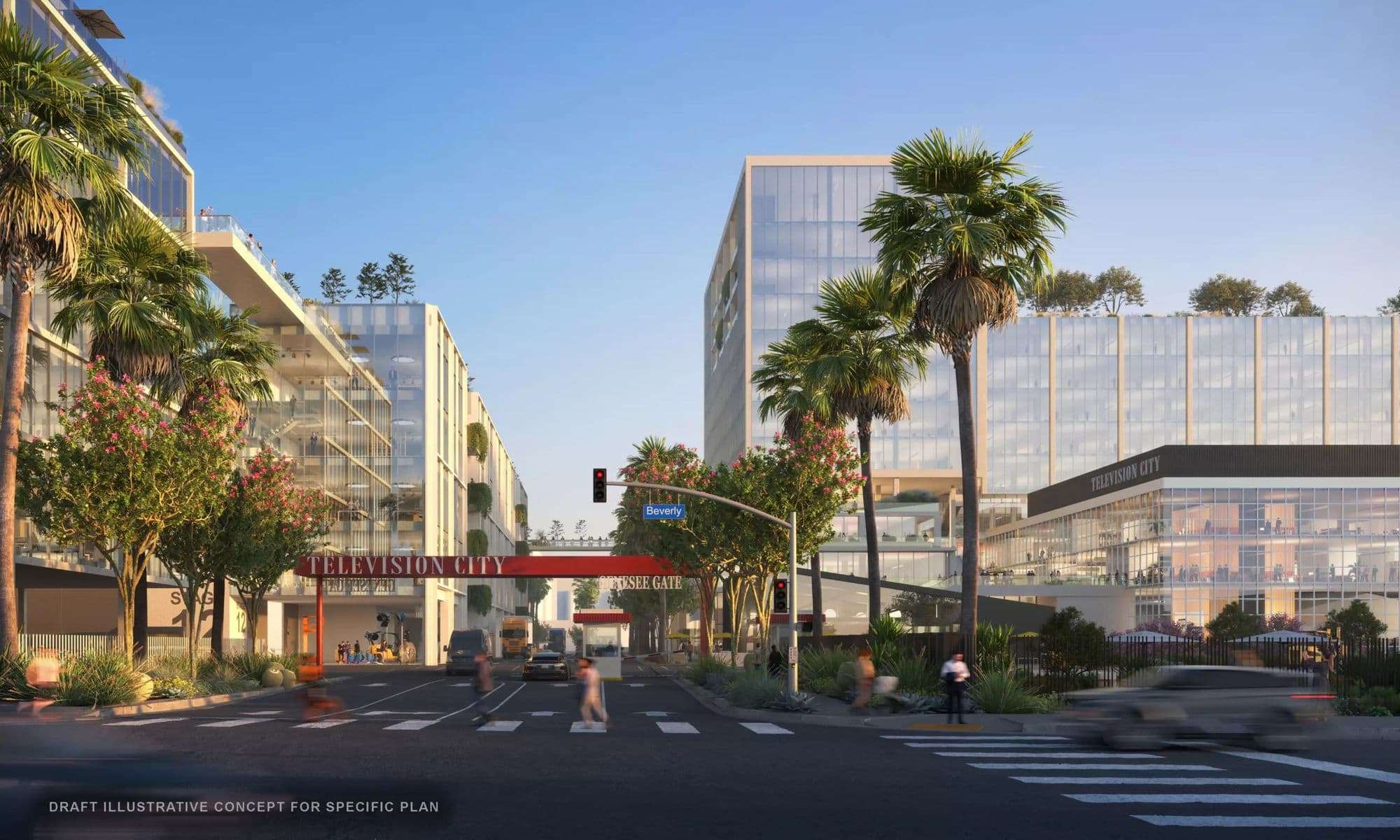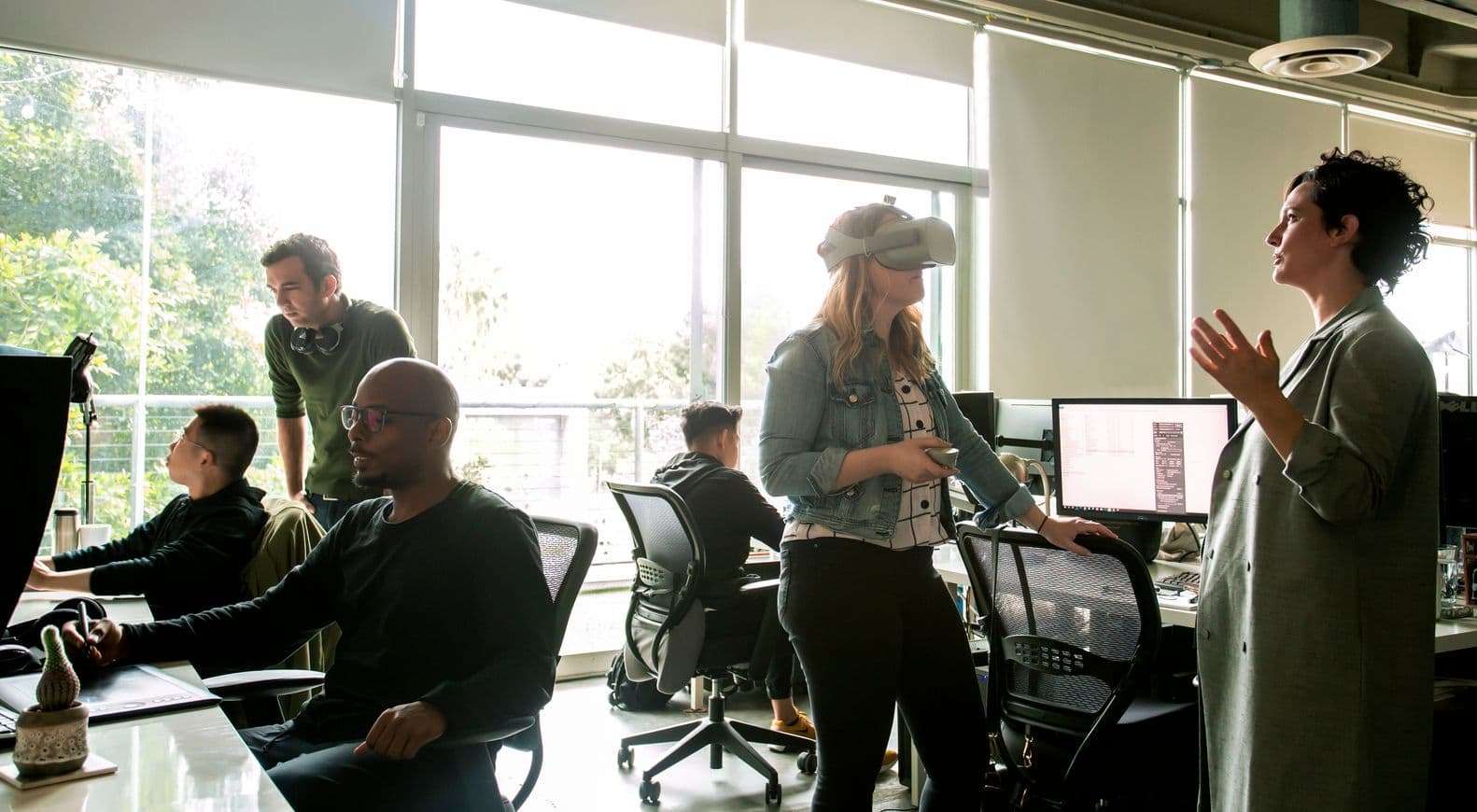
What Is an Internship Like at a Creative Agency and What You Need to Know
We interviewed the team at Kilograph to learn more about what an Internship looks like at a Creative Agency and what aspiring Rookie Awards Internship winners need to know.
Kilograph is a full service creative agency, offering a range of services from brand identity, 3D illustration, film and interactive experiences; with a focus on property and place storytelling. Kilograph is headquartered in Los Angeles California with a satellite office in Alicante Spain, although the teams are proud to have collaborators in every corner of the world.
We interviewed CEO and Founder Keely Colcleugh, Associate Creative Director JM Wilyat, and 3D Artist Lienny Ruiz, to learn more about what an Internship looks like at a Creative Agency and what our Rookie Awards Internship winners need to know.
JM: Most recently we have started to work on the redevelopment of Television City, a landmark production facility located right here in Los Angeles. We are creating a range of assets from illustrations, 360 panos, animation and even living-renderings, to help tell a story of the facility’s transition into the streaming-era.

Lienny: One recent project I worked on was Mountain View Village which was an animation with 7 panoramic renders and 13 additional still renders. This was a large development for us, as the entirety of the project had to be produced in 3D since we were seeing it from all angles. A lot of effort went into getting all of the animated and still cameras with proper lighting, making all the shaders look good and accurate to what the client was looking for, as well as animating objects and 3D people.
This was a project that really pushed the team's limits and allowed us to explore new software and techniques we hadn't tried before. One particular aspect that was really fun to try out on this specific project was a timelapse shot going from day to night, it was interesting to learn how to create an animated scene like this with 3d people in motion as well as the sky constantly changing with the lighting.
Lienny: I like to think we have a fun community within the office, everyone gets along well and we are always in contact with each other so there is no odd man out. In light of keeping the connection going through our work from home lifestyles, we have weekly zoom meetings where we gather virtually on Wednesdays and Fridays to chat and catch up on all the happenings throughout the week!
On occasions we will all enjoy dinner together (virtually) as Kilograph provides us with our choice of food for the night. We also really enjoy keeping a sense of friendly competition amongst each other, so every year we have a Green Scream competition on Halloween! On this day, we each create our own image from our Halloween costumes, and the results never dissapoint. All of these small but meaningful events have allowed us to get to know one another and create friendships not just within work.
JM: Kilograph’s company culture is best understood as a creative enclave where we value the organic exchange of ideas and creative thinking above all else. Keeping our sights focused on this dynamic leads to the sparks of innovation we hope will continue to permeate our work and the society that surrounds us.
Keely: We do quite extensive research into our clients and their projects, our teams ask a lot of questions in up-front meetings to ensure we understand their perspective and their needs. This helps us to deliver a proposal that aligns with expectations and can deliver effective solutions across a range of products and services.
JM: We embrace a fairly rigorous creative process across all of our services. This process begins with a creative brief where we distill the messaging into a core idea and reinforce our understanding of the intended audience and end goals for the project. From here there is incremental development across many phases where we continuously realign our efforts with that creative brief and client expectations to produce something incredible together.
Lienny: Collaboration happens on a daily basis, and is one of the biggest, most important parts of our job. It can be seen in the way we brainstorm ideas together, and it can also be seen throughout the development process of a project. There is always a back and forth in providing feedback to each other, giving suggestions on how things can be improved, and always asking questions when we are unsure or need guidance and advice. In my personal experience, I always chat with my team and send screenshots of my progress throughout the day to ask for their thoughts and suggestions on what I am doing. This can be for their thoughts on the interior design of a scene, the look and feel of 3D assets such as landscape, or even the post production of an image.
I find it really helpful to get opinions of those we are working with to ensure a smooth collaboration amongst each other. There are always different ways to do things and there are multiple eyes on a project for a reason - I always take other's ideas into consideration and also give my own suggestions as we continue to develop our projects together.
JM: Our approach to collaboration is very organic. Our studio consists of artists and other creative people that are constantly sharing thoughts and ideas. We resist the dynamic of top-down development so that all perspectives are considered and the best ideas can rise to the top. More practically speaking the team collaborates using various technologies, from google hangouts, email, ASANA, Vimeo and Miro boards; to help us share and build ideas as a team.

Keely: We partner with local high school programs such as Bresee and Universities such as UCLA to bring in interns on a regular basis. This injection of energy and fresh perspectives is always welcome and helps the teams to focus on nurturing talent as well as delivering work for our clients.
Keely: Excitement, creativity, and an interest in working within a team structure. Attitude is everything. This can be much more important than a strong portfolio.
JM: Our current internship program seeks to pair qualified candidates with a department of interest (graphic design, web, film, illustration, etc) so that they can learn how their education and skills might be utilised in a real world production environment. Whenever possible we offer hands-on training for our interns within real project deadlines to encourage a constant flow of new ideas and perspectives that are educational and can also benefit the outcome of work being created in the studio.
Lienny: A typical day for me really depends on the type of project I am involved in. Since early last year, our work spaces have shifted and we have been working from home so a lot of our communication has also shifted to zoom meetings, messaging or emailing one another. A crucial part of my day starts with communicating with team members to make sure my tasks are not overlapping with others as well as ensuring we are efficiently working on the right projects.
After all tasks for the day are squared away, my day can range from many different things. If we are starting a new project, sometimes I will assist in cleaning the 3D models we receive from clients and getting it organised into our workflow. Other times I'm more involved in the design by gathering 3D assets such as vegetation or furniture to fill a space or design the landscaping of a development.
Lastly, if we are in the final phases of the project, my day can be more focused on post production of an animation or still renderings in After Effects or Photoshop. Overall my typical day is never really the same and can be very diverse, which is something I really love about my job.
Lienny: My favourite part of the job is having the opportunity to be creative through multiple mediums. Oftentimes projects will allow for plenty of creative liberty, in which we take the opportunity to apply our own unique styles and sometimes learn new techniques. This can be in the form of producing an image with a new art style that has not been used before in our office, or having free range of designing all of the landscaping for a large development.
Another favourite is something I spoke about in the previous question; having the opportunity to see a project from start to finish. Because many of us are 3D generalists, we don't focus on one single task and move on to the next project.


A lot of our hard work is seen through the entire development of one project as we move from the initial phases all the way into the final post production. This makes many projects really feel like our own, as we put a lot of our own styles and ideas into developing the final outcome.
JM: An internship/mentorship program can be a very powerful tool for someone aspiring to enter a particular industry. I would say that the best advice is to go into this relationship with the same hunger for learning you approached your studies in school.
Never be afraid to admit you don’t know how to do something, Never stop asking questions, and never stop learning.
You will undoubtedly learn and grow so much during this time but the extent of that will largely be correlated to your proactive approach to the opportunity.
Lienny: Don't be afraid of learning new techniques and workflows, sometimes we find efficiencies in doing things a different way. It is completely okay to not know things, we are always learning and developing our own skills so while some may have more experience than others, new things can be learned from each other everyday. I think something helpful to prepare for such an opportunity is to have basic knowledge and understanding of perspective, scale, and light. Also knowing how overall spaces work and how to convey a story within those spaces to the viewer, can be highly beneficial.
Ask questions! A question that comes to mind that I have personally asked in my experience is what the reasoning behind a workflow or technique that I find interesting or helpful is. It's always good to know how those techniques developed and why they are being used in the office - I have personally been taught specific workflows, but have found more efficient ways by simply asking others whom I look up to. Questions geared towards different ways of developing things are always helpful as there are a million ways to do things in the 3D world, so learning and applying what feels most comfortable is something that helps artists continue to grow and further develop their skills.
Missed out on an Internship this year? Keep an eye on our contests page for weekly challenging design drills, internship opportunities, prizes and more!